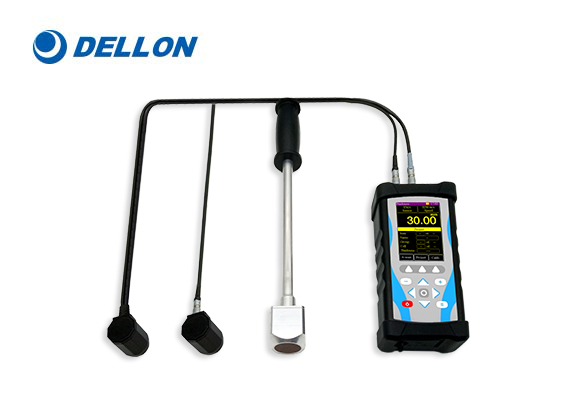The high-temperature thickness gauge is a precision instrument widely used in various industrial fields. It can measure high-temperature materials and components. Correct use and maintenance of high-temperature thickness gauges are of great significance to ensure the accuracy of measurement data and extend the service life of the instrument.
Use of high temperature thickness gauge
1.Choose the right equipment
Before using a high-temperature thickness gauge, you must first select an appropriate instrument based on actual measurement needs and environmental conditions, and understand the use range and accuracy requirements of the equipment. The applicable temperature range and accuracy of high-temperature thickness gauges of different brands and models will have certain differences. Therefore, when selecting equipment, you need to select the appropriate instrument model based on the actual situation to ensure that the measurement requirements are met.
2.Install the equipment correctly
When installing a high-temperature thickness gauge, follow the installation steps in the instrument's instruction manual. When connecting and setting up the high-temperature thickness gauge, ensure that the power supply, input and output ports of the device are connected correctly to avoid short circuits or open circuits. In addition, users also need to set parameters of the high-temperature thickness gauge according to measurement needs, such as measurement mode, measurement temperature, etc.
3.Periodic calibration and alignment
In order to ensure the accuracy and reliability of measurement data, high-temperature thickness gauges need to be calibrated and calibrated regularly during use. Generally speaking, newly purchased instruments should be fully calibrated before use, and then calibrated every six months or one year to ensure accurate measurement results.
4.Stable measurement environment
Before measuring, make sure the instrument is stable to avoid measurement errors caused by the instrument not being fully thermally balanced.

Maintenance and care of high-temperature thickness gauge
1.Use and replacement of probe protective wear-resistant belts
The front end of the probe will inevitably be worn by the workpiece during use, so a protective wear-resistant belt should be attached. High-temperature probes require high-temperature wear-resistant belt. The probe has a wear-resistant belt attached when it leaves the factory. Please check the wear-resistant belt on the front of the probe before use. If there is serious damage, please replace it in time.
2.Turn off the power promptly
After use, be sure to turn off the power of the host to avoid battery damage due to over-discharge, and do not store it at a loss of power for a long time. If it is not used for a long time, please perform regular charging and maintenance (about once every 1.5 months, 3~4 hours each time)
3.Clean equipment regularly
In order to maintain the measurement accuracy and stability of the high-temperature thickness gauge, users need to clean and maintain the equipment regularly. Cleaning mainly includes cleaning the surface and interior of the equipment to remove dust and other impurities. Maintenance mainly includes checking whether the fasteners and wiring of the equipment are loose or aging to ensure the normal operation of the equipment. When cleaning all parts, it is advisable to wipe with a slightly damp soft cloth. Direct soaking or flushing is prohibited.
4.Safe storage
When using and storing high-temperature thickness gauges, high temperatures and humid environments should be avoided. Exposure to high temperatures for a long time can easily lead to damage to the instrument and inaccurate measurements. A humid environment can easily cause the electronic components inside the instrument to become damp and corroded, affecting the service life of the instrument. When not in use, please store it upright indoors/in the car, with a storage environment temperature of -20~+60℃, relative humidity ≤85%, ventilation, and no corrosive gases.
Correct use and maintain of high temperature thickness gauge is the key to ensuring its measurement accuracy and extending its service life. During use, you need to understand the scope of use and measurement principle of the high-temperature thickness gauge, correctly connect and set up the equipment according to the instructions for use, ensure that the equipment works at a stable working point, and perform regular calibration, maintenance and upkeep. Correct use and maintenance of high-temperature thickness gauges can ensure the normal operation and accurate measurement of high-temperature thickness gauges, improve measurement accuracy and equipment service life, and provide important data support for industrial production and scientific research experiments.
